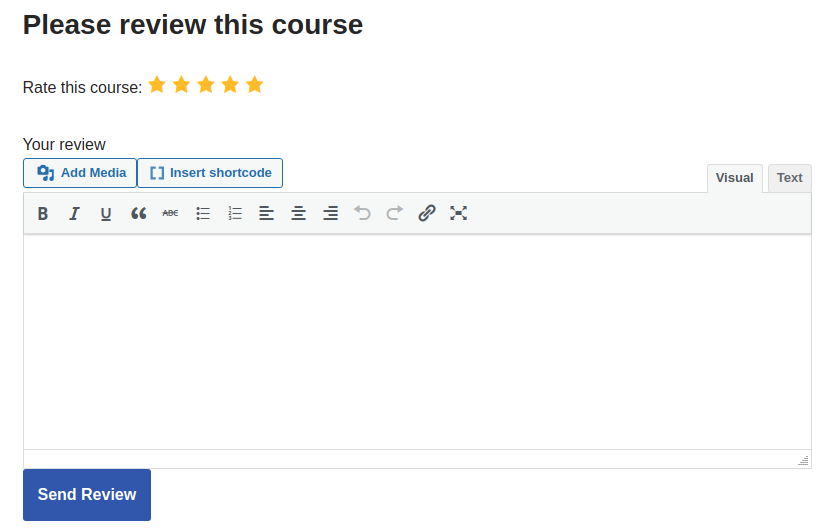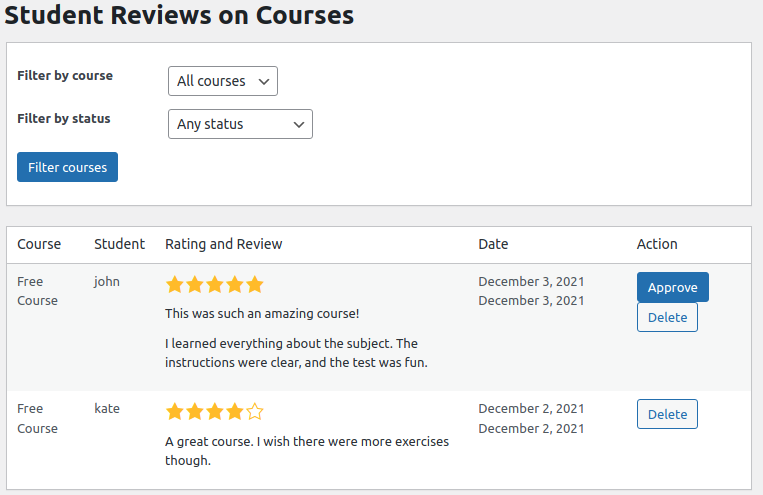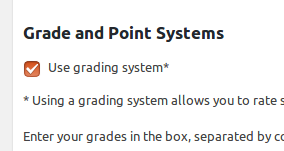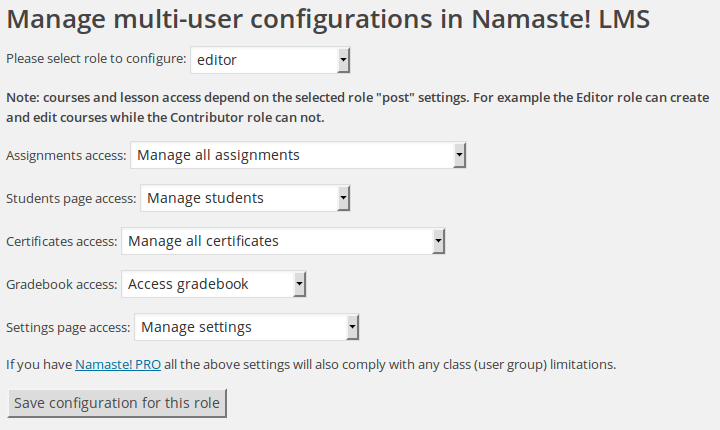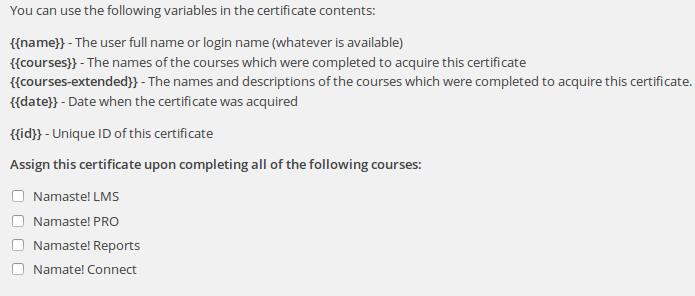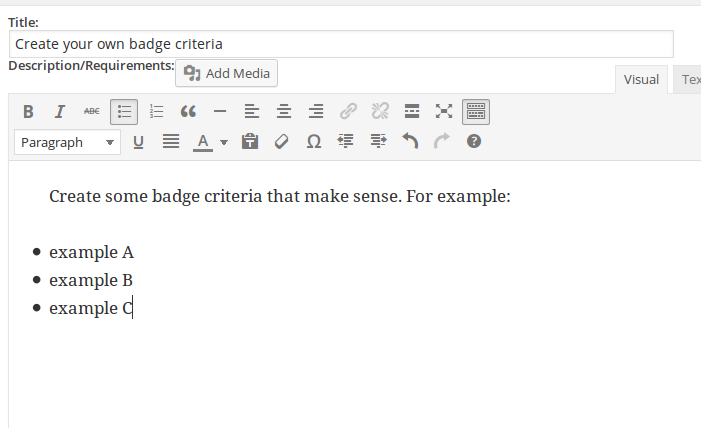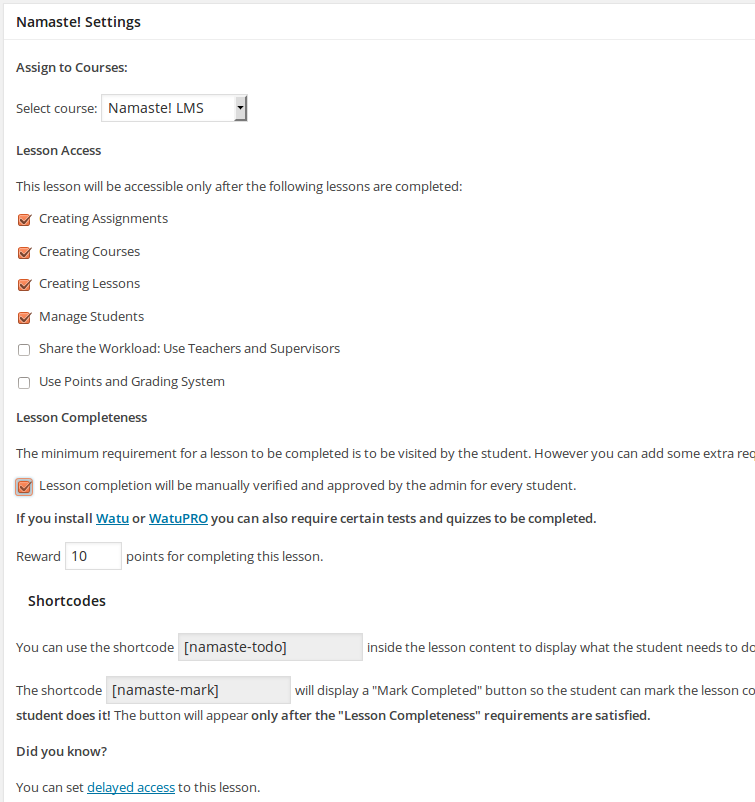The grading system in Namaste! LMS can be optionally enabled from the Namaste! LMS Settings page. There is no fixed grading system, neither predefined choices so you can use anything you want.
In this article we’ll use one of the most common grading systems in the world with five letters: A, B, C, D, F. You can of course to choose grades like A-, B+ etc, a numeric grading system from 2 to 6 for example, a simple system having just “Fail” and “Pass” grades and so on.
Setting The Grading System
To configure a grading system you need to go to Namaste! LMS Settings page and check the checkbox as shown below:

Spacing between commas does not matter and all the spaces will be trimmed from your grades (we have intentionally misplaced one of the commas in the example above).
Once this is activated a menu “Gradebook” will appear under your Namaste! LMS menu. Upon selecting a course you will be able to see all students in it and assign grades to their lessons and courses.
Grading Assignments
Assignments can be graded by teachers / managers from the View Solutions page. These grades will then appear in the gradebook next to the lesson grade selector. They will not automatically grade the lesson but will be shown there to help the teacher decide about the lesson grade.
Grading Lessons
Lessons can be graded manually in the gradebook.
They can also be graded automatically if you have assigned a Watu / WatuPRO quiz to the lesson. How does this work:
1. In the Edit Lesson page select that the quiz is required to complete the lesson:

2. It does not matter if you select specific grade(s) from the right selector. They have relation only to completing the lesson, not to grading it.
3. Select the checkbox below as shown so the grade from the quiz is transferred as lesson grade.
For this to work your quiz grade titles should match exactly the grades in Namaste! LMS. As you see in our example, quiz grades are A, B, C, D and F. So if the user achieves B on the quiz AND your grading system in Namaste! LMS contains grade “B”, the grade from the quiz will automatically become a grade for the lesson.
Another example: if you have entered the Namaste! LMS grades as “Passed, Failed” your quiz grades should also be “Passed” and “Failed”.
Grading Courses
Courses can be graded manually in the gradebook.
Courses can also be graded automatically as an average from the lesson grades. To do this, on the Edit Course page select the checkbox that says “Automatically grade this course based on its lesson grades”:

When this is select grading will automatically happen at the time of completing the course. The grades of all the graded lessons will be gathered and an average grade will be found based on them. This happens by automatically assigning points to each grade position, then finding the average of these points and figuring out the corresponding grade. The following illustration explains it visually:

The left side of the image shows how the selected by you grades are assigned points behind the scene based on their position (lowest start with 0 points and then it adds 1 point for each grade up). Then we collect the points for all lesson grades and divided by the number of lesson. The result is rounded to a whole number and the grade that has this number of points is assigned to the course. Lessons that have no grade assigned do not participate in the calculation and don’t increase the number of lessons the system divides on.
One important thing to note: since this calculation happens at the time of completing the course, a grade which is given to lesson after that will take no effect. So if your latest lesson triggers course completeness and you want it to participate in the grading, it should be graded before completing the lesson – either manually, or automatically via assigned quiz.

